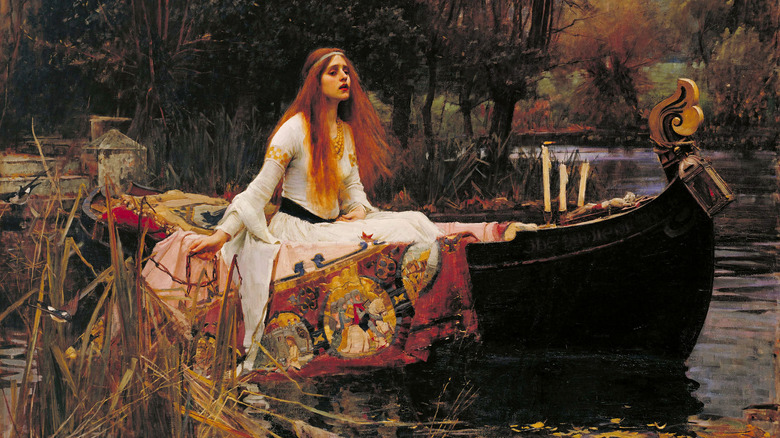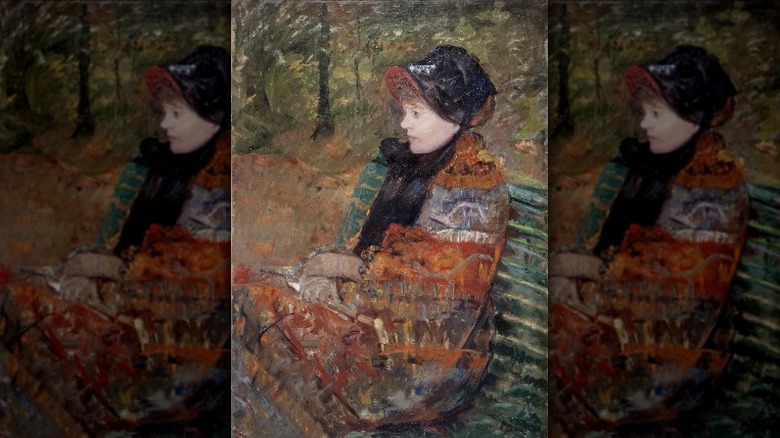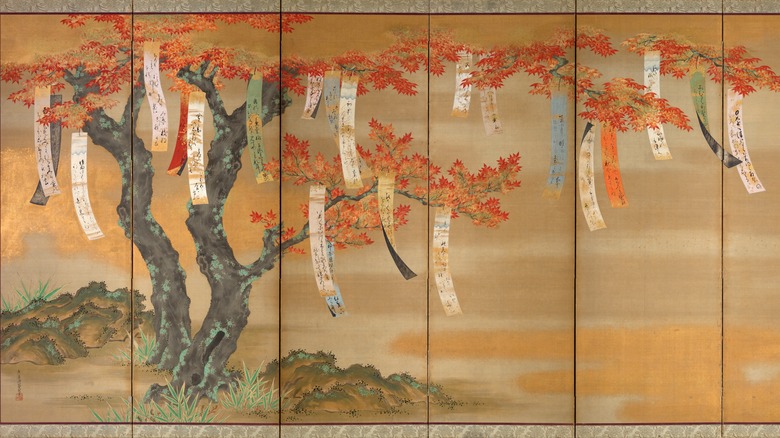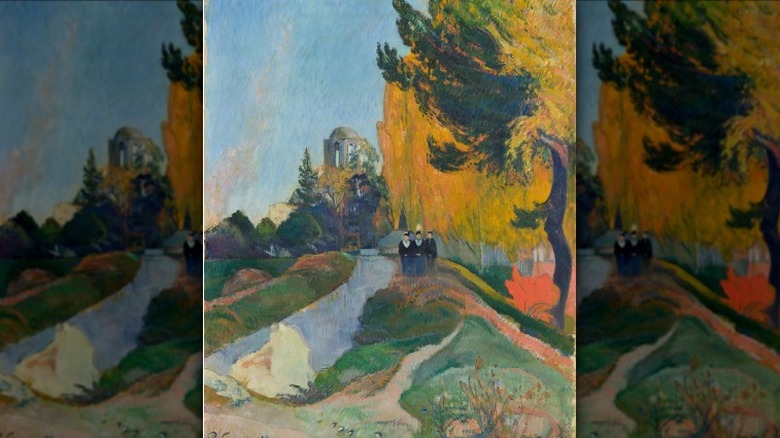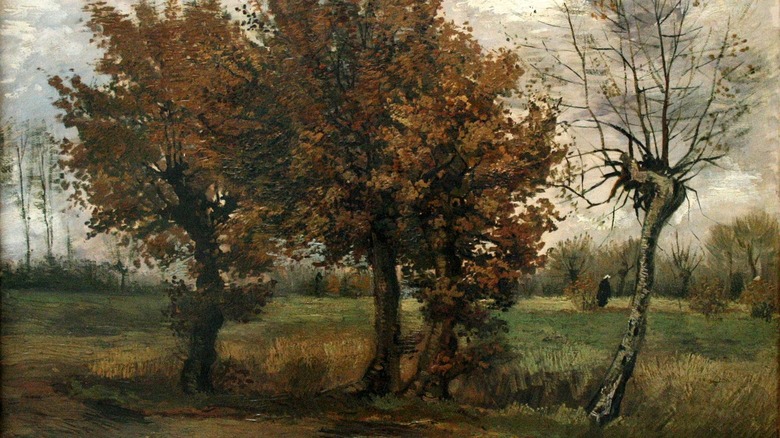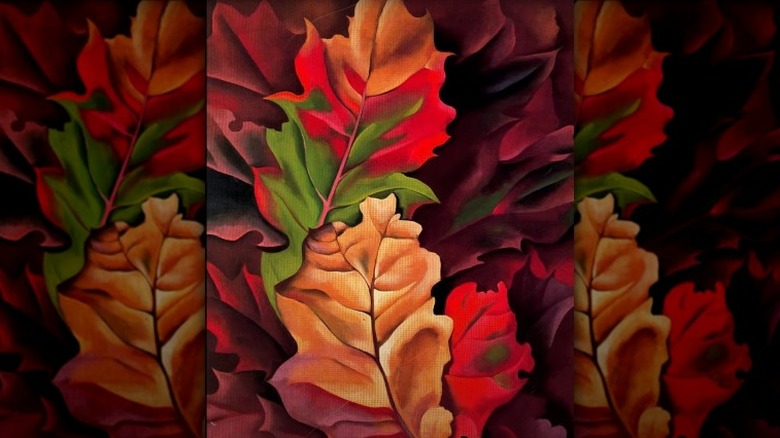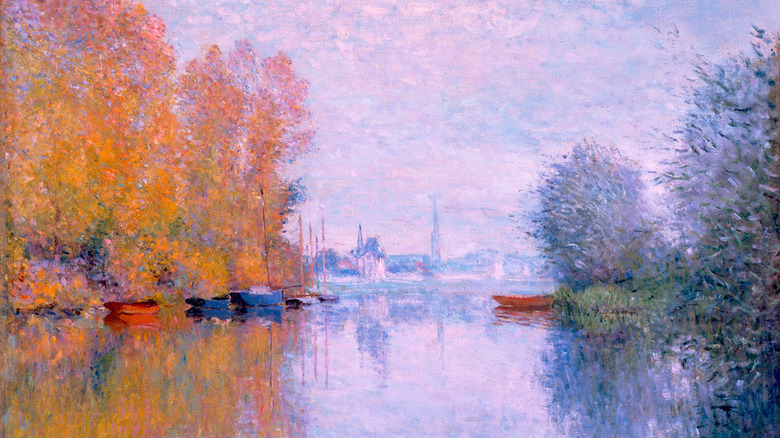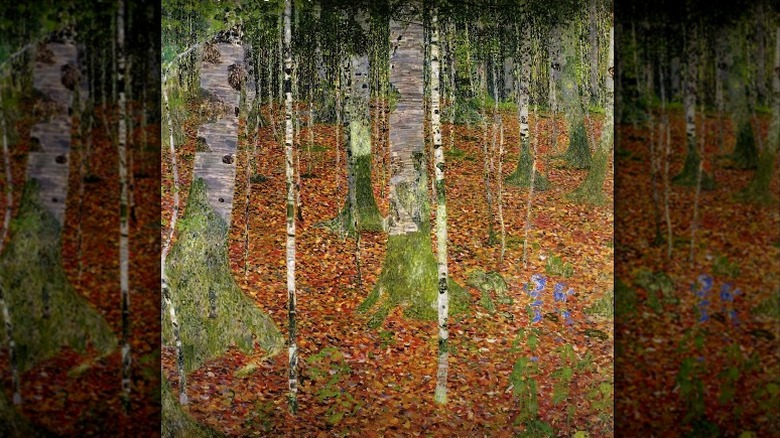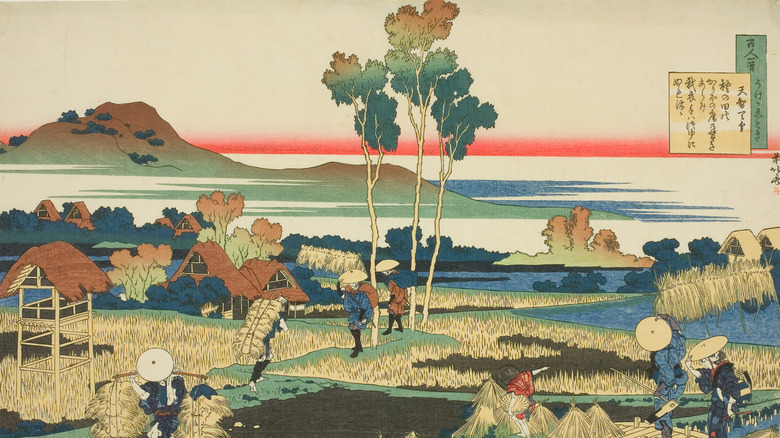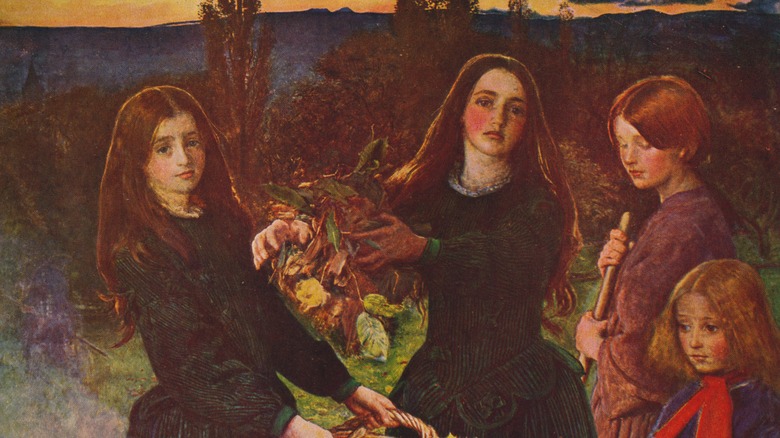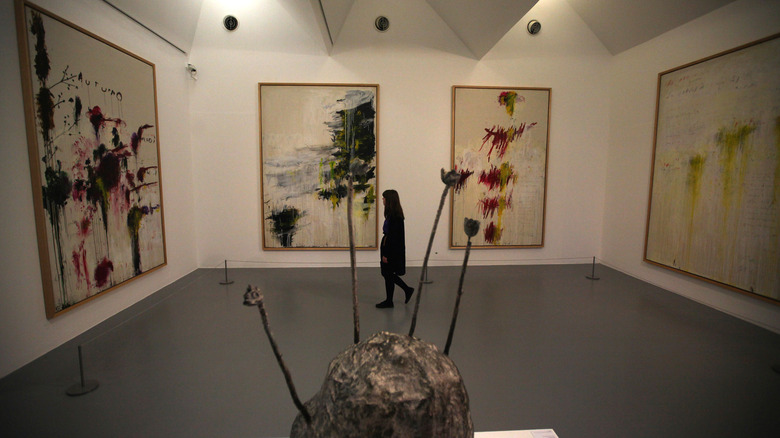Gaze At These 11 Famous Paintings To Get Yourself In The Autumn Spirit
It's officially pumpkin season. At least, you can probably find pumpkin-spiced products for sale somewhere in your area — thanks, Starbucks. According to Bustle, there's a psychological reason why we're all so "obsessed" with autumn. According to professor of psychology Amy Jane Griffiths, the cooler weather and holidays associated with the season hold a certain nostalgic value. "We all crave the comfort and security that comes with traditions and predictability," explains Dr. Griffiths. "[Traditions] may relate to joyful experiences with friends and family and provide something to look forward to." As temperatures drop in many parts of the world, we take comfort in watching cozy movies for "psychological warmth," curling up with a book, or even prepping our homes with seasonal decor.
Peer pressure also plays a role in the hype surrounding fall. As Bustle explains, we've evolved to reflect our surrounding. So if the neighbors start decorating, we're quick to wheel out the pumpkins too. However, if you're still not 100% onboard the autumn spirit train (and want to be), look no further than these 11 wonderfully-seasonal paintings.
The Lady of Shalott by John William Waterhouse
"With glassy countenance/ Did she look to Camelot," wrote English poet Lord Alfred Tennyson in his 1832 poem, "The Lady of Shalott." 19th century painter John William Waterhouse chose to recreate these lines with oil paint on canvas (via Tate). In the scene, the cursed "Lady of Shalott" floats downstream, presumably to Camelot. Dressed in white, she's surrounded by colorful fall foliage — even her hair is a rich, autumnal bronze. The artist frequently looked to Tennyson's poetry for inspiration, according to Tate. Influenced by the Pre-Raphaelite Brotherhood of painters, Waterhouse had a habit of depicting tragic female heroines, and the poor Lady of Shalott is no exception (via Britannica). Visit the painting in person at the Tate Britain museum.
Autumn, Portrait of Lydia Cassatt by Mary Cassatt
In this 1880 oil on canvas painting, American Impressionist Mary Cassatt depicts her ailing sister, Lydia. Lydia sits on a park bench in autumn, wrapped in a blanket to protect her from the outdoor chill. She wears a black bonnet on her head, contrasting with her pale features (via The History of Art). Sadly, Lydia passed away from Bright's disease two years after her sister finished this portrait. Though Mary Cassatt didn't often paint her subjects outdoors, Lydia proved to be the exception, appearing in several "plein-air" works (via The Met).
Autumn Maples with Poem Slips by Tosa Mitsuoki
On a six-paneled silk screen, Tosa Mitsuoki depicts the bright foliage of a Japanese maple. Mitsuoki was active during the early Edo period, and served as a Court Painter beginning in 1654 (via Art Institute Chicago). Hanging from the fiery maple are tanzaku, slips of paper inscribed with seasonal poetry — couriers helped Mitsuoki incorporate written elements into the piece. The six-paneled maple is part of a set; an opposite-facing flowering cherry tree represents Spring.
Landscape in Arles near the Alyscamps by Paul Gauguin
Paul Gauguin was a French Post-Impressionist perhaps best known for his 1888 painting, "Where do we come from? What are we? Where are we going?" He's remembered for his bold use of color and long-time (notably-turbulent) friendship with Vincent Van Gogh, per Britannica. In 1888, he ventured to the city of Arles in Southern France to paint alongside his friend, as Van Gogh was a frequenter of the area (via Musée d'Orsay). This painting marks one of Gauguin's first works in Arles, highlighting the city's bright fall foliage. Three figures walk alongside a canal, and a Roman necropolis stands elevated in the background. Also available for viewing at the Musée d'Orsay is Manet's famous work, "Luncheon on the Grass" (a painting perhaps better suited for summer months).
Autumn Landscape with Four Trees by Vincent van Gogh
Speaking of van Gogh, the "Starry Night" artist also payed homage to fall foliage in his 1885 painting, "Autumn Landscape with Four Trees" (via Vincent van Gogh). Though the oil on canvas piece was completed just four years before "Starry Night," there are definitive stylistic differences. The trees' colorful leaves are painted with precision, the gray sky lets in only a sliver of sun. In the year before his death, van Gogh again tried his hand at fall leaves, painting "The Mulberry Tree in Autumn" complete with his signature, heavy-handed spirals, per Vincent van Gogh.
Autumn Leaves, Lake George by Georgia O'Keeffe
Georgia O'Keeffe is known for her bold, modernist flowers and New Mexico landscapes. However, she also dabbled in autumn foliage (via Georgia O'Keeffe Museum). O'Keeffe was fond of fall in the Adirondacks, and collected the vibrant leaves she found while staying in Lake George (via George O'Keeffe). This particular painting is alive with reds, deep maroons, and even summer greens seeping out of the fallen leaves. This is just one in a series of nearly 30 still life paintings features leaves from Lake George.
Autumn on the Seine at Argenteuil by Claude Monet
When we hear the name Claude Monet, we often think about his water lilies. However, Monet — often labeled the founder of Impressionism — also represented the fall landscape in Argenteuil, France, painting the reflection of bright leaves on the Seine (via High). This 1873 painting represents Monet at the hight of Impressionism, the reflective surface of the river perfectly-doubling the autumnal foliage. This painting can be seen in person at the High Museum of Art in Atlanta, Georgia.
Birch Forest by Gustav Klimt
You might know Klimt for "The Kiss." In 1903, years before he painted his most famous work, the artist decorated the floor of an autumn wood with his trademark gold (in this case, gold leaf became leaves). The forest scene, a favorite spot of the artist's in Litzlberg, Austria, is quintessential autumn (via Senses Atlas). The leaves are undisturbed, their only observer Klimt himself. "Birch Forest" is currently valued at a staggering $90 million, per ARTnews.
Peasants in Autumn by Katsushika Hokusai
At the highest point of the print, leaves transition from green to red. Below the towering tree, peasants harvest fall crops. This woodblock print was made between 1835 and 1836 by Katsushika Hokusai, most well-known today for his "36 Views of Mount Fuji" series (Katsushika Hokusai). "The Great Wave off Kanagawa" was one of those 36 prints — poster versions of the wave are now visible in thousands of dorm rooms across the United States. "Peasants in Autumn" features in one of Hokusai's last single sheet series, according to Scholten Japanese Art. The series, titled "The Hundred Poems as Told by the Nurse," was based off of an anthology of poems compiled by Fujiwara no Teika in the 13th century.
Autumn Leaves by John Everett Millais
If you like Louisa May Alcott's "Little Women," you'll like "Autumn Leaves," painted by John Everett Millais in 1856. Four girls gather a pile of fall leaves at twilight; from the bottom of the stack sneaks a thread of smoke, per Art UK. It's just as cozy as it is mysterious, the sad expression of girls creating an underlying sense of gloom. Millais is perhaps best remembered for his 1851-1852 painting "Ophelia," depicting the tragic heroine from Shakespeare's "Hamlet."
Quattro Stagioni: Autunno by Cy Twombly
This one might not be obviously-seasonal at first glance, but stick with it. "Autunno" is part of a four-part series — "Quattro Stagioni" (Four Seasons) — by American artist Cy Twombly (via Tate). The series, which Twombly began painting in 1993, highlights all four season, with "Autunno" boasting the richest hues of the bunch. According to The Guardian, Twombly was influenced by the Bassano in Teverina seasonal wine harvest — in fact, the idea for the entire series began with his love of autumn. Ultimately, the four paintings contend with the passage of time, an inescapably sad concept, especially if you don't want to wave goodbye to brightly-colored fall.

